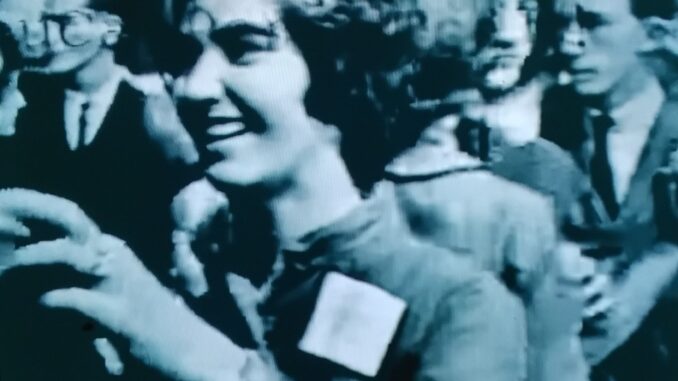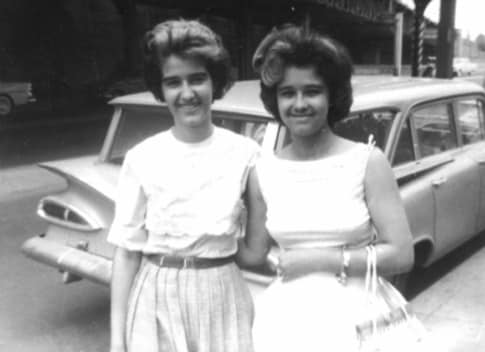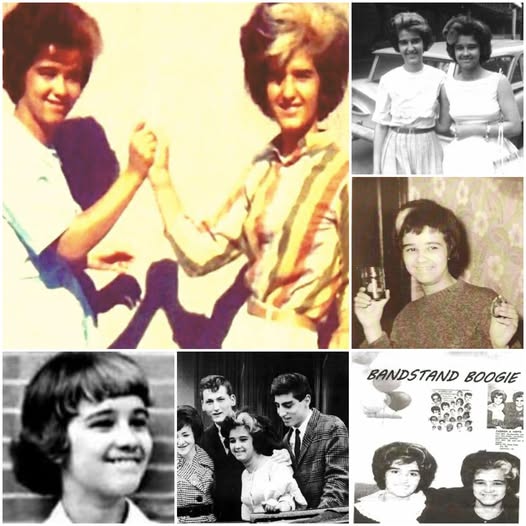
The Calm Beside the Spotlight
Some dancers on American Bandstand shined through charisma, others through choreography. But Ivette Jimenez stood out in another way—by simply being calm, graceful, and quietly strong.
In a studio filled with nervous teens and excitable crowds, Ivette was the one who centered the room. Her soft expressions, steady rhythm, and natural elegance gave the dance floor an anchor. She wasn’t flashy. She didn’t need to be. Her presence alone invited calm into the chaos.
Many remember her not just as a dancer, but as a kind of older sister figure—not only to Carmen, her younger sibling, but to newer dancers and even some Regulars who looked to her for assurance.

Sisters on the Dance Floor
Ivette and Carmen Jimenez made a rare duo on Bandstand: a pair of Latina sisters who brought not just steps, but soul. In the late 1950s, their presence quietly expanded the image of what a Bandstand girl could be.
Ivette often danced next to Carmen, not in perfect unison, but with a natural harmony. Viewers noticed the way they mirrored each other—not to compete, but to complement. When asked in a local interview what she loved most about dancing on the show, Ivette answered simply: “Dancing with my sister, and knowing our parents were watching at home.”
They danced with pride—pride in their family, in their culture, and in their bond. To many watching, they were more than dancers. They were symbols of closeness, tradition, and hope.

A Life Beyond the Camera
When Bandstand moved to California in 1964, Ivette didn’t follow. She chose home—Philadelphia, family, and a quieter path. She married a few years later, raised two children, and focused on building a life rooted in warmth and connection.
Though she stepped away from the spotlight, Ivette remained deeply involved in her local community. Whether volunteering at church events or organizing neighborhood gatherings, she brought the same steady grace to her everyday life that viewers once saw on screen.
She didn’t talk much about her television days unless asked. But when she did, her eyes sparkled. “It was fun,” she once told a neighbor, “but my real dance was here—raising my kids and helping people feel safe in their own homes.”

Strength in Silence
There’s a kind of strength that doesn’t come from volume, but from constancy. Ivette never tried to be the center of attention. She never competed. But people noticed her anyway—for her kindness, for her dependability, for the way she always made space for others.
As her children grew, they began to realize that the quiet woman who helped them with homework had once danced live on national television. Her granddaughter once said: “I didn’t know she was famous, but I knew she was special.”
Ivette continued attending community dances well into her 60s—not to perform, but to keep rhythm with life. Her dance was always for connection, not for applause. She stayed in touch with old Bandstand friends, sent handwritten cards for birthdays, and helped organize neighborhood food drives.

A Legacy of Grace
Today, few might recognize her walking down the street. But for those who knew Ivette—or watched her dance beside her sister—she remains unforgettable.
Her legacy isn’t in headlines. It’s in gestures: a guiding hand to a younger dancer, a patient voice on the phone, a quiet smile that made the whole room feel safe. She represents what Bandstand truly meant for many teens: belonging, quiet confidence, and finding your rhythm in your own way.
For every Carmen who danced with brightness, there was an Ivette who grounded it in grace. And that balance, that unspoken harmony, is why they’re still remembered.
Did You Remember the Jimenez Sisters?
Were you ever touched by Ivette’s calm strength? Did she remind you of someone in your own family—steady, soft-spoken, but deeply impactful?
We’d love to hear how she inspired you.
📝 Share your memory with us here: